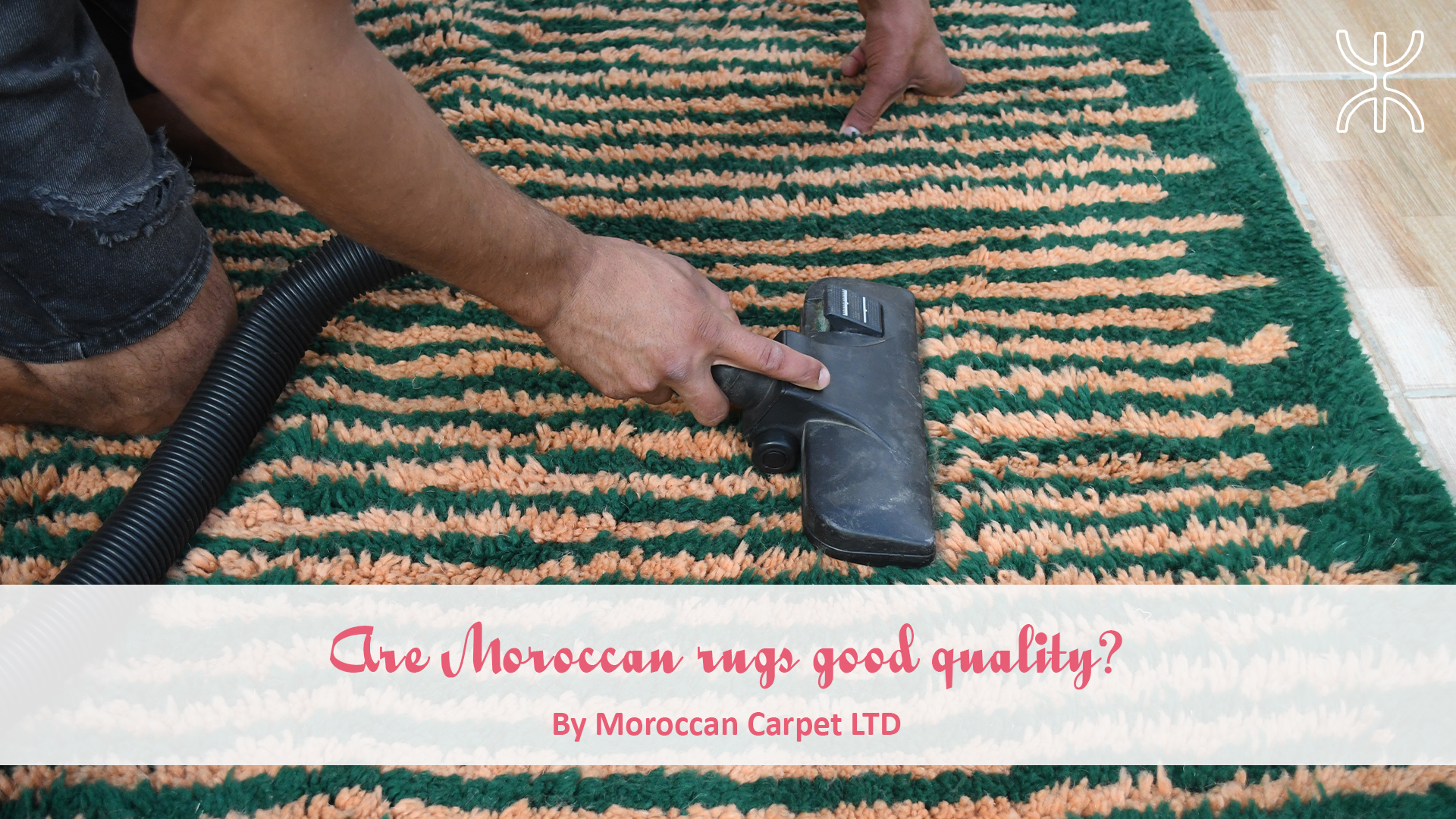Unveiling the Quality of Moroccan Rugs: A Legacy of Craftsmanship
Moroccan rugs, with their captivating designs and vibrant colors, have captivated the world. However, one question often lingers in the minds of potential buyers: are they truly high-quality pieces? In this article, we delve into the intricate details of Moroccan rug craftsmanship, revealing the factors that contribute to their enduring quality and cultural significance.
A Timeless Legacy of Skill and Tradition
Moroccan rugs boast a rich history, woven by skilled artisans from various Berber tribes across Morocco for centuries. This age-old tradition, passed down through generations, has resulted in the creation of rugs that are not only aesthetically pleasing but also incredibly durable.
Unveiling the Key Factors Defining Quality
Several key factors contribute to the overall quality of Moroccan rugs:
- Materials:
- Wool: Traditional Moroccan rugs are primarily crafted from high-quality, hand-spun wool sourced from local sheep. This wool is renowned for its durability and resilience, ensuring the rug can withstand years of use.
- Silk: Some Moroccan rugs incorporate silk threads into their designs, adding a touch of luxury and softness. Silk rugs are highly sought after for their lustrous sheen and delicate texture.
- Knotting Technique: Moroccan rugs are typically hand-knotted, a labor-intensive process that involves tying knots to create intricate patterns. The density of knots per square inch can vary, with higher knot counts generally indicating better quality. A higher knot count results in a finer, more detailed rug with a sturdier structure.
- Design and Patterns: The complexity and intricacy of a rug’s design significantly impact its quality. Moroccan rugs often feature geometric patterns, tribal motifs, and cultural symbolism, each meticulously woven with precision. Fine detailing and flawless execution of these patterns enhance the rug’s overall quality and aesthetic appeal.
- Craftsmanship: The skill and expertise of the weaver play a crucial role in the quality of the rug. Experienced artisans meticulously handcraft Moroccan rugs, ensuring that each knot is expertly tied and that the rug’s overall structure is sturdy and long-lasting.
- Age and Vintage: Vintage and antique Moroccan rugs, particularly those that are several decades old, are highly sought after by collectors and interior designers. The age and rarity of a rug can significantly affect its quality and price, making them prized pieces with a rich history.
- Region of Origin: Morocco has various rug-producing regions, each with its unique styles and qualities. Some regions are renowned for producing particularly high-quality rugs, such as the Beni Ourain rugs known for their plush, ivory-colored pile.

Price Reflecting Quality
In general, the price of a Moroccan rug is a reliable indicator of its quality. Higher-quality rugs often come with a higher price tag due to the use of premium materials, intricate designs, and skilled craftsmanship.
A Legacy Woven into Every Thread
Moroccan rugs are celebrated for their exceptional quality and craftsmanship. Understanding the factors that contribute to their excellence – from the use of high-quality materials like hand-spun wool to the intricate knotting techniques and cultural significance woven into their patterns – allows you to appreciate the true value of these exquisite pieces.
Whether you seek a rug that tells a story, enhances your decor, or adds warmth to your space, Moroccan rugs are a worthy investment that brings both beauty and cultural heritage into your home. With the right care, a Moroccan rug can be a cherished piece that lasts for generations, maintaining its quality and timeless appeal.
